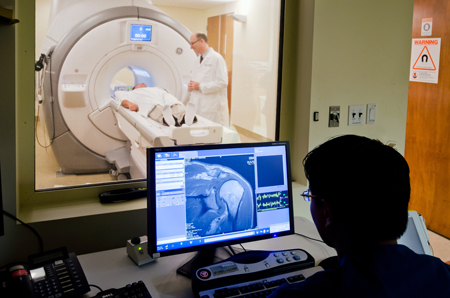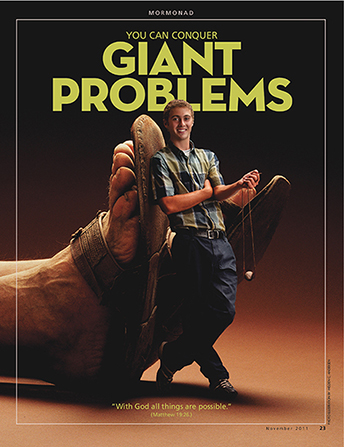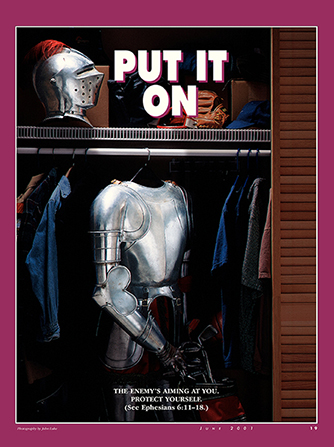Post # 14 –The MRI
Dear Family and Friends,
In this last few days
I have been working on getting ready for total knee replacement surgery and
getting my students graduated. And with those things done I have also been
trying to get lesson plans ready for my substitute teacher to use while I am recovering
from my surgery. No, I haven't got very far with my planning -- computer issues. It is so much easier for me to write them up on the computer because of my neuropathy that I have in my hands:(
It's been kinda rough trying to keep up with everything that I need to do for work and then home is another story -- right? or do you have those problems in your life, when your days run together and you don't feel like you are getting anything at all done that is on your 'to do' list? then there are all of these tests that I have to get done and doctor visits to get clearance for my upcoming surgery that takes me away from work ---

So needless to say I truly don't feel like I am making the progress there that I should be making and my time is running out to get it all completed before I head out to the city with my daughter and her family for my surgery. they take a little mini-vacation so that I do not have to stay in the city all alone after my surgery they are there to come to the surgery center to see me, which is very nice.
I know that it will
take me a few weeks to be recovered enough to return to work, but I have been
through this type of surgery back in January with my right knee, so I am
familiar with how it goes. I am just excited about being able to walk without
any pain. I am sure some of you out there may have had to deal with bad knees
before or are dealing with it now or know someone who is dealing with it. Just be
supportive and as helpful as you can for them but let them do as much as they
can for themselves whenever possible.
MRI scan: MRIs use radio waves and strong magnets instead of x-rays
to make detailed pictures of the inside of your body. MRIs can show the tumor
and other parts of the body.
https://www.cancer.org/cancer/cancer-basics/if-you-have-cancer.html
The CT scan, the MRI, and the PET scan are ones that I struggle with every time they need to do one. I am very claustrophobic and being in that tunnel for the test is not any fun for me!! They do have an open imaging MRI machine now and if there is one – that is the one that I would choose, but I don’t like being sandwiched in there either. Every time they require these tests – I ask for a Priesthood blessing they help me every time.
https://www.cancer.org/cancer/cancer-basics/if-you-have-cancer.html
The CT scan, the MRI, and the PET scan are ones that I struggle with every time they need to do one. I am very claustrophobic and being in that tunnel for the test is not any fun for me!! They do have an open imaging MRI machine now and if there is one – that is the one that I would choose, but I don’t like being sandwiched in there either. Every time they require these tests – I ask for a Priesthood blessing they help me every time.
:max_bytes(150000):strip_icc():format(webp)/GettyImages-501868913-5900f8183df78c54563dd055.jpg)

What is an MRI?
Magnetic resonance imaging (MRI) is an imaging
tool designed to create detailed, cross-sectional pictures of the inside of the
body. Using radiofrequency waves, powerful magnets and a computer, MRI systems
may distinguish between normal and diseased tissue.
MRI plays an important role in cancer diagnosis,
staging and treatment planning. With MRI, we may distinguish between normal and
diseased tissue to precisely pinpoint cancerous cells within the body. It also
may be useful for revealing metastases. MRI provides greater contrast within
the soft tissues of the body than a CT scan. As a result, it is often used for
imaging the brain, spine, muscle, connective tissue and the inside of bones.
During an MRI, a patient rests on a table and
slides into a scanner. Some exams require a contrast dye to be injected into a
vein before the procedure. This helps certain areas show up better on the
images. The procedure is painless and typically takes 30-60 minutes.
Unlike X-rays and CT scans, an MRI does not use
radiation.
https://www.cancercenter.com/treatments/mri/
https://www.cancercenter.com/treatments/mri/

MRI for Cancer
Other names for this test: magnetic resonance imaging, MRI, magnetic resonance, MR, and nuclear magnetic resonance (NMR) imaging
MRI helps doctors find cancer in the body and look for signs that it has spread. MRI also can help doctors plan cancer treatment, like surgery or radiation. MRI is painless and you don’t have to do anything special to get ready for this test. But, it’s very important to tell your doctor and the technologist (the person who does the test) if you have any metal in your body.
What does it show?
MRI creates cross-section pictures of your insides. But MRI uses strong magnets to make the images – not radiation. An MRI scan takes cross-sectional slices (views) from many angles, as if someone were looking at a slice of your body from the front, from the side, or from above your head. MRI creates pictures of soft tissue parts of the body that are sometimes hard to see using other imaging tests.
MRI is very good at finding and pinpointing some cancers. An MRI with contrast dye is the best way to see brain and spinal cord tumors. Using MRI, doctors can sometimes tell if a tumor is or isn’t cancer.
MRI can also be used to look for signs that cancer may have metastasized (spread) from where it started to another part of the body.
MRI images can also help doctors plan treatment such as surgery or radiation therapy.
(A specific kind of MRI can be used to look inside the breast. Learn more about breast MRI.)

How does it work?
An MRI scanner is a long cylinder or tube that holds a large, very strong magnet. You lie on a table that slides into the tube, and the machine surrounds you with a powerful magnetic field. The machine uses a powerful magnetic force and a burst of radiofrequency waves to pick up signals from the nuclei (centers) of hydrogen atoms in your body. A computer converts these signals them into a black and white picture.
Contrast materials can be put into the body through a vein to clearer images. Once absorbed by the body, the contrast speeds up the rate at which tissue responds to the magnetic and radio waves. The stronger signals give clearer pictures.
How do I get ready for the test?
MRI scans are most often done on an outpatient basis, so you don’t have to be in a hospital to get one.
You don’t usually need to follow a special diet or do anything to get ready for an MRI, but follow any instructions you are given.
If being in a small, enclosed space is a problem for you (you have claustrophobia), you might need to take medicine to help you relax while in the scanner. Sometimes talking with the technologist or a patient counselor, or seeing the MRI machine before the test can help. In some cases, you can arrange to have an open MRI which allows more space around your body (see the next section).
Sometimes a contrast material is used for MRI imaging. You may have to swallow the contrast, or you may have an intravenous (IV) catheter put in a vein in your arm so the contrast can be given into your bloodstream. The contrast material used for an MRI exam is called gadolinium. (This is not the same as the contrast dye used in CT scans.) Let your doctor and the technologist know if you have any kind of allergies or have had problems with any contrast used in imaging tests in the past.
If you have any of these implants, you should not even enter the MRI scanning area unless told to do so by a radiologist or technologist who knows you have:
- An implanted defibrillator or pacemaker
- Clips used on a brain aneurysm
- A cochlear (ear) implant
- Metal coils put inside blood vessels
Also be sure the technologist knows if you have other permanent metal objects, such as surgical clips, staples, screws, plates, or stents; artificial joints; metal fragments (shrapnel); tattoos or permanent makeup; artificial heart valves; implanted infusion ports; implanted nerve stimulators; and so on.
You may need to have an x-ray to check for metal objects if there’s any doubt.

What is it like having the test?
You may be asked to undress and put on a gown or other clothes without zippers or metal. Be sure to remove any metal objects you can, like hair clips, jewelry, dental work, and body piercings. Before the scan, the technologist will ask you if you have any metal in your body.You will lie down on a narrow, flat table. The technologist may use straps or pillows to make you comfortable and help keep you from moving. The table slides into a long, narrow cylinder. The part of your body that’s being scanned will be in the center of the cylinder. The scanned part of your body may feel a little warm during the test, this is normal and nothing to worry about.You’ll be in the exam room alone, but you can talk to the technologist, who can see and hear you at all times.The test is painless, but you have to lie inside the cylinder with its surface a few inches from your face. It’s important to stay very still while the images are being made, which can take a few minutes at a time. You may be asked to hold your breath during certain parts of the test. Tell the technologist if you need to move or take a break.The machine makes loud, thumping, clicking, and whirring noises, much like the sound of a washing machine, as the magnet switches on and off. You may be given earplugs or headphones with music to block noise out during the scan.Special, open MRI machines that are less restrictive may be easier for some people. These machines replace the narrow cylinder with a larger ring. This design lessens the banging sound and the feeling of lying in an enclosed space. But the machine doesn’t create as strong a magnetic field, and the pictures may not be as clear or detailed as they are with standard MRI. Sometimes, this can lead to getting rescanned on a standard MRI machine.How long does it take?
MRI scans usually take between 45 and 60 minutes, but can sometimes take up to 2 hours. After the test, you may be asked to wait while the pictures are checked to make sure that they are clear and show all of the body part. If not, more pictures may be needed.
What are the possible complications?
People can be hurt in MRI machines if they take metal items into the room or if other people leave metal items in the room.
Some people become very uneasy and even panic when lying inside the MRI scanner.
Some people react to the contrast material. Such reactions can include:
- Nausea
- Pain at the needle site
- A headache that develops a few hours after the test is over
- Low blood pressure leading to a feeling of lightheadedness or faintness (this is rare)
Be sure to let your health care team know if you have any of these symptoms or notice any other changes after you get the contrast material.
Gadolinium, the contrast material used for MRI, can cause a special complication when it’s given to patients on dialysis or who have severe kidney problems, so it’s rarely given to these people. Your doctor will discuss this with you if you have severe kidney problems and need an MRI with contrast.
What else should I know about this test?
- MRI can cost a lot. You may want to be sure your health insurance will cover this test before you have it.
- People who are overweight may have trouble fitting into the MRI machine.
- The use of MRI during pregnancy has not been well studied. MRI is usually not done in the first 12 weeks of pregnancy unless there’s a strong medical reason to use it.
- Do not bring credit cards or other items with magnetic scanning strips with you into the exam room – the magnet could wipe out the information stored on them.
- MRI does not expose you to radiation.
- https://www.cancer.org/treatment/understanding-your-diagnosis/tests/mri-for-cancer.html

I am hoping that the information
in my last few posts has been helpful to you. I will write about the next step
on this journey in my next post, but for now, I have children to look out for!
So, you all have a wonderful day!
No comments:
Post a Comment